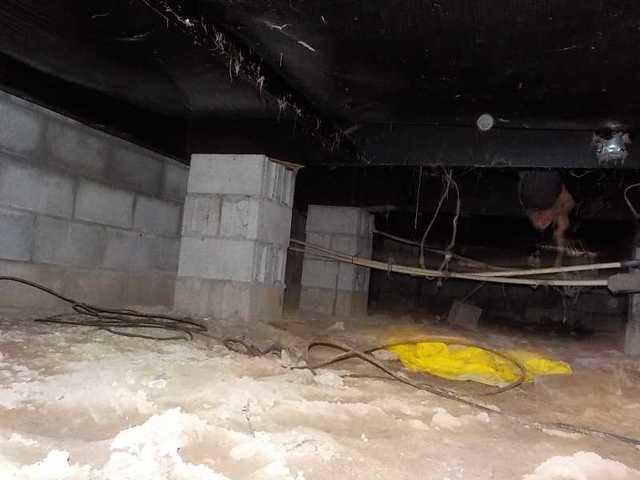
Signs of Water on Block Walls
The staining on the block walls is a sign of water entry - dark staining like this and white powdery residue (efflorescence) both indicate that water is coming in through the blocks and stagnating in the crawl space.
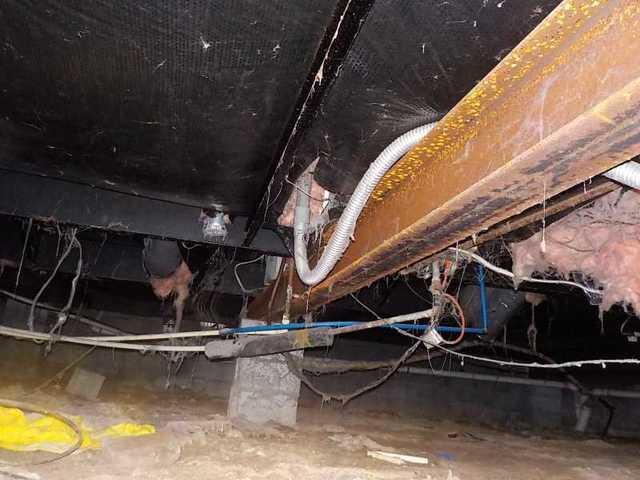
Corroded Beam in Wet Crawl Space
The constant ambient moisture (humidity) caused this beam to rust. Over time, it can become unstable as it supports the weight of the home.
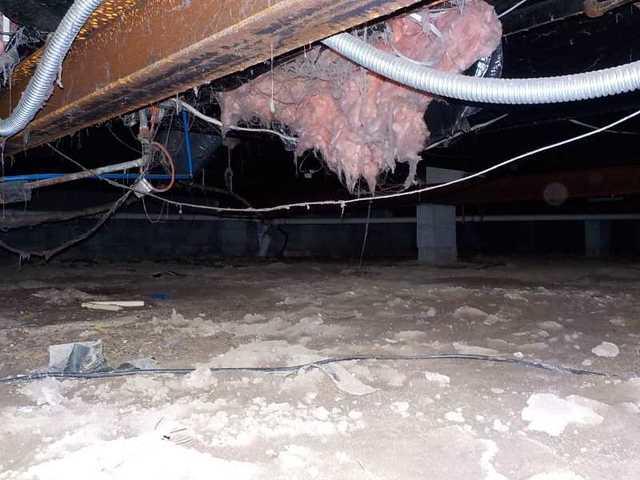
Fiberglass Insulation is the Wrong Choice
Traditional fiberglass insulation is great in the rest of your home, but in a basement or crawl space it's a bad choice. It absorbs water and can harbor mold (the paper backing on the insulation is a great food source). Eventually, it gets too heavy from all of the absorbed moisture and falls, leaving the house even less protected.
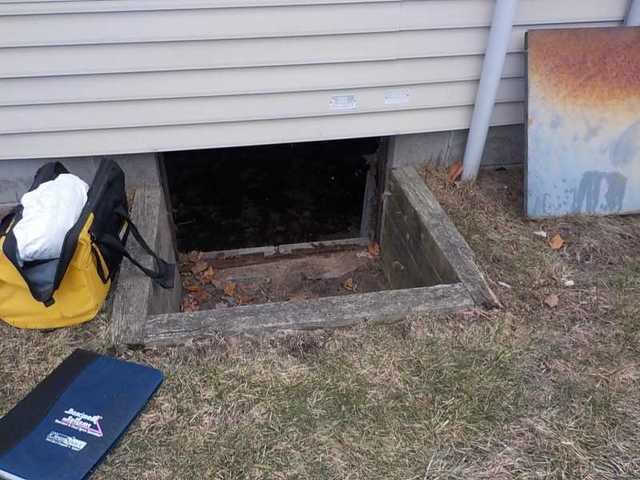
Lackluster Crawl Space Door
The existing door wasn't air or water tight, leaving the crawl space (and home) exposed to the elements.
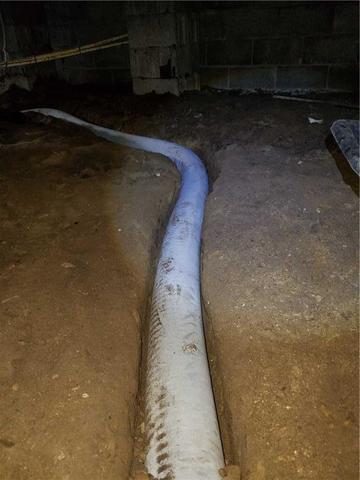
Drain Tile Protects Entire Crawl Space
In crawl spaces that have multiple low points, we install drain tile to connect all at risk areas directly to the sump pump. This ensures that ALL of the water gets discharged.
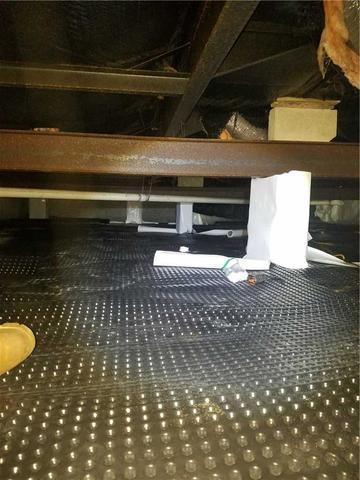
Drainage Matting Helps Flow of Water
The dimpled surface of the drainage matting gives standing water just enough room to move to the sump pump without getting "stuck" between the CleanSpace and the ground.
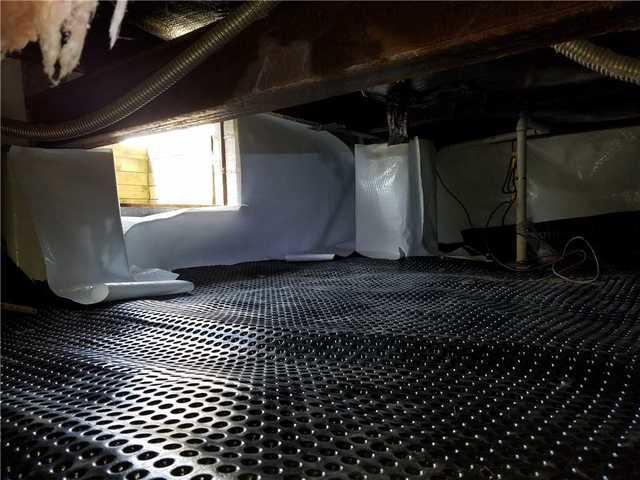
Beginning of CleanSpace Encapsulation
Once the drainage matting is in place, we can begin installation of the CleanSpace vapor barrier. CleanSpace is attached to the walls and floor to protect the crawl space from all sources of incoming water.
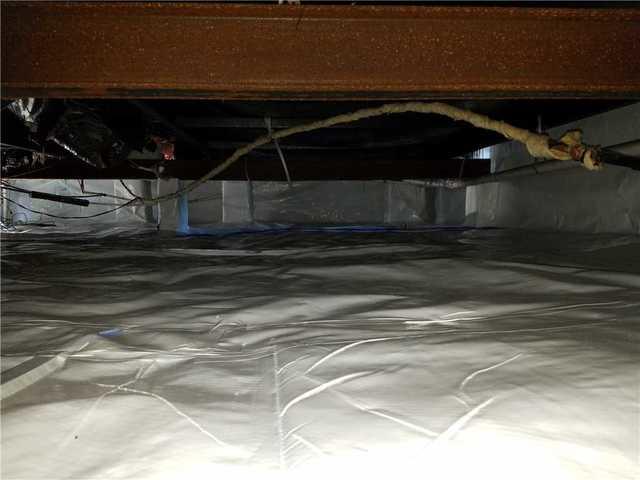
Crawl Space Encapsulation
With the encapsulation complete, the home will be safe from ambient moisture, which allows for mold growth and compromises support beams and posts.
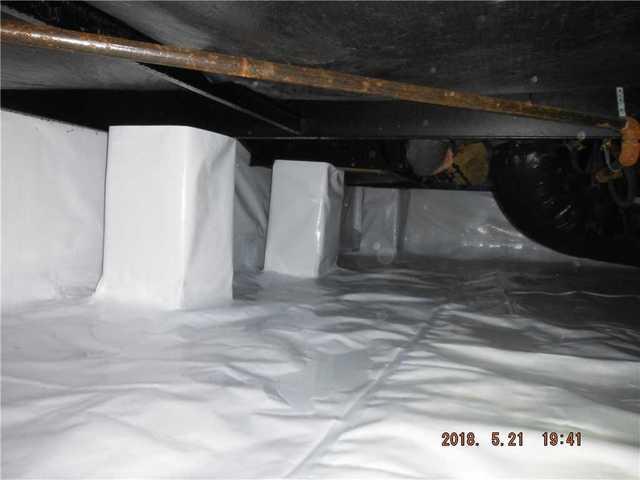
Wrapping Piers for Extra Protection
In addition to the walls and floor, we wrap support piers to protect them from the effects of moisture.

SmartSump Pump Keeps Crawl Space Dry
The SmartSump is ideal from crawl spaces.









